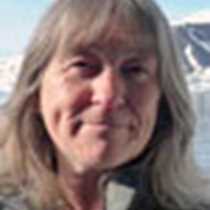Scotland
Having settled comfortably overnight into our accommodations on the Lord of the Glens, we set off on our first adventure to explore the history and culture of Scotland. Our first destination was the unforgettable site of the battle of Culloden, a windswept moor where Bonnie Prince Charlie met his nemesis on April 16, 1746. The hopes of the Jacobites and their sympathisers were finally crushed that day by superior Government forces under the Duke of Cumberland, unleashing reprisals against the highlanders that was eventually to lead to the suppression of Gaelic language and culture, and to the clearances themselves. A recently-built visitor centre portrayed the story in graphic terms, including a surround-cinema experience placing the onlooker in the thick of the battle. The beautiful, sunny August morning, however, made a joyful contrast to the bleak battlefield, with its wildflowers and lovely harebells, and the heather now bursting out in glorious purple.
A short distance away, but several thousand years back in time, the Clava Cairns fascinate and mystify its visitors. Two passage-graves and a ring-cairn, built in the Early Bronze Age around 2000BC, form the centre of a wider complex focused on the winter and summer solstices. At sunset on midwinter’s day, the last dying rays of the sun shone down the passageways and illuminated the chambers inside, making their red sandstone facades glow in the light, and sending a message of hope and life renewed to the farming community who built them with such precision.
During lunch, the Lord of the Glens began its journey southwards along the Caledonian Canal towards Loch Ness. Walkers and passers-by waved as we progressed along the tree-lined canal, and no-one wanted to miss being on deck to watch the ship squeeze into our first lock. Soon we were sailing in Loch Ness itself, with Konia telling us stories of Nessie and pointing out all the highlights. One of the greatest of these was Urquhart Castle, a dramatic and picturesque ruin dating from the early 13th century, that had featured in every significant conflict for almost 500 years. Carol then gave a short presentation on the prehistory of the area, before arriving for a leisurely evening at the delightful lochside village of Fort Augustus.
Having settled comfortably overnight into our accommodations on the Lord of the Glens, we set off on our first adventure to explore the history and culture of Scotland. Our first destination was the unforgettable site of the battle of Culloden, a windswept moor where Bonnie Prince Charlie met his nemesis on April 16, 1746. The hopes of the Jacobites and their sympathisers were finally crushed that day by superior Government forces under the Duke of Cumberland, unleashing reprisals against the highlanders that was eventually to lead to the suppression of Gaelic language and culture, and to the clearances themselves. A recently-built visitor centre portrayed the story in graphic terms, including a surround-cinema experience placing the onlooker in the thick of the battle. The beautiful, sunny August morning, however, made a joyful contrast to the bleak battlefield, with its wildflowers and lovely harebells, and the heather now bursting out in glorious purple.
A short distance away, but several thousand years back in time, the Clava Cairns fascinate and mystify its visitors. Two passage-graves and a ring-cairn, built in the Early Bronze Age around 2000BC, form the centre of a wider complex focused on the winter and summer solstices. At sunset on midwinter’s day, the last dying rays of the sun shone down the passageways and illuminated the chambers inside, making their red sandstone facades glow in the light, and sending a message of hope and life renewed to the farming community who built them with such precision.
During lunch, the Lord of the Glens began its journey southwards along the Caledonian Canal towards Loch Ness. Walkers and passers-by waved as we progressed along the tree-lined canal, and no-one wanted to miss being on deck to watch the ship squeeze into our first lock. Soon we were sailing in Loch Ness itself, with Konia telling us stories of Nessie and pointing out all the highlights. One of the greatest of these was Urquhart Castle, a dramatic and picturesque ruin dating from the early 13th century, that had featured in every significant conflict for almost 500 years. Carol then gave a short presentation on the prehistory of the area, before arriving for a leisurely evening at the delightful lochside village of Fort Augustus.



